Cognitive Dissonance: Theory, Examples & How to Reduce It

In this paper, we place dissonance theory in the larger framework of appraisal theories of emotion, emotion regulation, and coping. The basic premise of dissonance theory is that people experience negative affect (to varying degrees) following the detection of cognitive conflict. The individual will be motivated to alleviate these emotional reactions and could do so by reducing dissonance in some manner. We argue that detection of dissonance will follow the same principles as when people interpret any other stimuli as emotionally significant.
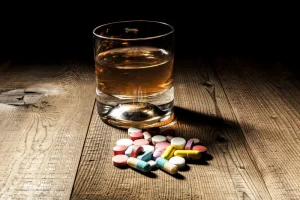
Social behavior
When the boundaries between reality and fantasy are blurred, people can be confused, anxious, or mistrustful. Experiencing cognitive dissonance is just one part—the other part is often looking for ways to minimize the feelings that the dissonance brings. When you smoke, you may feel guilt because you know smoking can cause cancer and that you should stop.
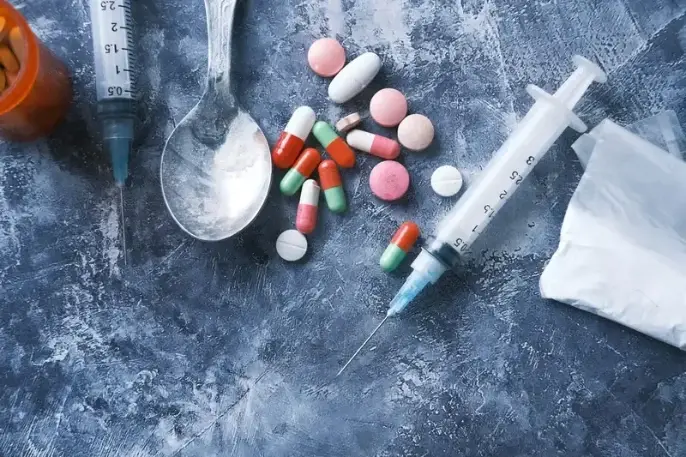
The theory behind cognitive dissonance
- It doesn’t just influence how you feel; it also motivates you to take action to reduce feelings of discomfort.
- Sometimes, when you’re faced with difficult decisions in the moment, it’s best to take a break and revisit it later when all parties have processed what’s happened.
- On the other hand, changing your perception of the behavior by telling yourself you have enough driving experience to text and drive safely will not have the same long-term outcome.
- If the CDS is a specific state, then instruments should allow the CDS to be distinguished from other negative emotions.
If your explanation for something is, “Well, that’s the way I’ve always done it or thought about it,” that may also be a sign. Socrates extolled that “An unexamined life is not worth living.” In other words, challenge and be skeptical of such answers if you find yourself falling back on them. On a big-picture level, we have cognitive dissonance to thank for huge advancements within society. Dr. Noulas says that successes in women’s rights, environmental rights, and gay rights are examples of positive change that have resulted from cognitive dissonance. Those changes were due to individuals recognizing contradictions between how people viewed women, the environment, and nontraditional relationships and how we acted as a society (or allowed others to act). Finally, many of the studies supporting the theory of cognitive dissonance have low ecological validity.
Social pressures
The idea is, choosing something that is in opposition to how you feel or believe in will increase cognitive dissonance. Cognitive dissonance theory proposes that people seek psychological consistency between their expectations of life and the existential reality of the world. To function by that expectation of existential consistency, people continually reduce their cognitive dissonance in order to align their cognitions (perceptions of the world) with their actions. People may run into problems with cognitive dissonance because it can be, in its most basic form, a sort of lie to oneself.
Emotional correlations
Next, we will explore this notion more closely by presenting a general model of dissonance reduction. Based on the process model, more recent research has attempted to understand under which circumstances people choose one emotion-regulation strategy over another. Sheppes (2014) argues that emotional intensity, motivational goals (cf. Kelman and Baron, 1968), and cognitive capacity (cf. Kaplan and Crockett, 1968) will influence the decision. Thus, if the headline is a character-assassination of your favorite politician, you might not read the article because you suspect that the content might be too emotionally arousing. As for cognitive capacity, Sheppes argues that reappraisal (vs. distraction) is a more complex cognitive operation because it requires both attending to and elaborating on the emotional stimuli, and reappraisal might thus be avoided when the individual feels that it may be too cognitively taxing.

If a voluntary experience that has cost a lot of effort turns out badly, the dissonance is reduced by redefining the experience as interesting. In all conditions, they then heard a very boring discussion about sex in lower animals. They were asked to rate how interesting they had found the discussion and how interesting they had found the people involved in it. Female participants were informed they would be helping out in a study funded by several manufacturers. Participants were also told that they would receive one of the products at the end of the experiment to compensate for their time and effort.
- We first describe dissonance theory and review some of the major views on dissonance reduction.
- In all conditions, they then heard a very boring discussion about sex in lower animals.
- If successfully implemented, the individual might feel relief after denying responsibility.
- The participants felt like hypocrites — but their intention to take the positive action increased.
- Coaches are skilled at helping people navigate the stages of behavior change and resolve internal discomfort.
- Researchers have found that people usually deal with these dilemmas by seeking support from those who share one’s beliefs, but also by refuting and/or misperceiving/misinterpreting the new information (see e.g., Gawronski et al., 2014).
- However, if the reduction strategy fails, the individual might feel a prolonged sense of annoyance and irritation.
Consider the importance of dissonant thoughts
Developing the self-awareness to notice and question the dissonance often resolves it. Social psychologists have uncovered dozens of cognitive biases, such as self-serving bias, unconscious bias or implicit bias, confirmation bias, fundamental attribution error, and the sunk-cost fallacy. Say you’re a student looking to choose between two different universities you’d like to attend.
How to Reduce Cognitive Dissonance
- The propaganda office was called the “Ministry of Truth,” a camouflage for “Ministry of Disinformation.” Its proclaimed tenets of Truth (lies) declared that freedom was equivalent to slavery, war was love, and ignorance became strength.
- The predictive dissonance account proposes that the motivation for cognitive dissonance reduction is related to an organism’s active drive for reducing prediction error.
- In other words, people can react vastly different to the same dissonant situation and then resolve the situation in several different ways.
- Since these strategies imply that the individual managed to somehow resolve the situation, a full-blown negative emotion is unlikely to have evolved (or is at least unlikely to still be present).
- She holds a master’s degree in psychology with a concentration in behavioral neuroscience and a bachelor’s degree in integrative neuroscience from Binghamton University.
As a classic result in dissonance studies, they were also expected to report more positive attitudes toward the counterattitudinal topic. Participants were invited to participate in a study about students’ attitudes toward tuition fees. They read instructions explaining that a faculty committee wanted to know students’ attitudes towards a possible increase in tuition fees. In order to know the general attitudes of the students, participants were told that they would have to write an essay either in favour of or against an increase in tuition fees. In the Counter-attitudinal condition, all participants were told that they would have to write an essay in favour of an increase in inscription fees.

Free-choice was emphasized by telling participants that they were free to participate or not in the study and that they could quit the study at any time, without any loss of benefits or other negative consequences. As for guilt (a lower-intensity self-conscious emotion), this emotion is experienced when people acknowledge having violated standards, rules cognitive dissonance addiction and/or goals (SRGs) (Lewis, 2016). For example, using a car when walking is completely feasible or not giving up one’s seat for an elderly individual on the subway might produce feelings of guilt. Since guilt usually has a corrective response, the individual might try to make amends for the transgressions in these cases (e.g., behavioral change).
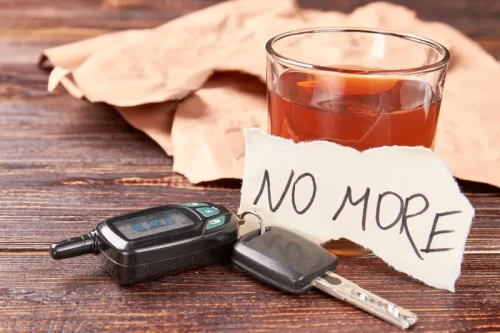
- Published in Sober living
Alcohol Detox at Home How to Detox from Alcohol Safely
If done at home without medical attention, alcohol withdrawal can even be deadly. However, this time of cleansing is the first step to putting your life back on track. Following detox, you will be ready to enter alcohol rehab and learn sober living skills that will help you during the lifelong process of recovery.
What helps with shakes from alcohol withdrawal?
We publish material that is researched, cited, edited and reviewed by licensed medical professionals. The information we provide is not intended to be a substitute for professional medical advice, diagnosis or treatment. It should not be used in place of the advice of your physician or other qualified healthcare providers. Alcohol dependence or alcohol use disorder can ruin a person’s life, and yet many continue to can you drink coffee with adderall abuse the drug knowingly to avoid alcohol withdrawal. Detox and withdrawal are infamous in the addiction community for being physically and psychologically distressing.
A stomach pumping is eco sober house a medical procedure that eliminates gastric substances and toxins via suction. Light exercise and a proper diet can help you adjust to the detox. Exercise can reduce stress, improve mood, and bolster your immune system.
Symptoms usually peak by 24–72 hours but may go on for weeks. In a recent study, 95% of people had symptoms that lasted between 2-8 days. Several factors like how long a person has been drinking, age or weight can also impact the length or severity of withdrawal symptoms. Alcohol abuse also affects dopamine, a neurotransmitter linked to the body’s reward system. This neurotransmitter regulates energy, enjoyment and motivation.
What Does Drinking Alcohol Do to the Body?
If you begin to experience DT, you always need to get immediate medical attention, as it can be life-threatening. A self-detox involves detoxing from alcohol at home without medical support or supervision. It allows you to manage alcohol withdrawal symptoms in the comfort of your own home with little cost. If you don’t experience intense withdrawal symptoms, an at-home detox may be a good option. However, alcohol withdrawal syndrome is dangerous and require supervision from medical professionals. Some people avoid medically supervised rehab because they prefer natural remedies for alcohol withdrawal.
- If you’re sweating, place a cold towel on your forehead or on the back of your neck.
- Eating healthier helps your body heal from the effects of alcohol.
- Some people find that smaller, more frequent meals help if nausea is an issue.
- You may want to speak with a loved one or therapist about a strategy to prevent relapses from happening.
- Withdrawal symptoms occur during detox, a natural process where the body works to remove toxins from the system and reach a new equilibrium.
Remove all alcohol from your home or ask a friend or family member to do it for you. This includes beer, wine, and liquor, as well as products that contain alcohol such as rubbing alcohol and vanilla extract. The abstinence stage typically begins right after you stop drinking. If you’re ready to make a positive change, here’s what you may want to know about the recovery process. If you’re having difficulty sticking to your goal or just want some extra guidance, consider reaching out for professional support. You might run into obstacles along the way that tempt you to drink.
At-home detox and quitting “cold turkey” seem more convenient than working with a rehab facility, but these approaches have severe health risks. They can be managed with prescribed medications such as benzodiazepines. Maintaining a calm and comfortable environment, staying hydrated and avoiding stimulants like caffeine is also helpful. If you have the shakes, medical intervention is typically necessary, as shakes can be a sign of mirtazapine interactions with alcohol more serious withdrawal complications. While you may not feel like exercising during withdrawal, a small amount of exercise is a great tool for coping with alcohol withdrawal.
– Ride out the cravings.
When the alcohol level suddenly drops, your brain stays in this keyed up state. Drink plenty of fluids, but you don’t have to drink just water. Keep it interesting and varied with sparkling water, virgin cocktails (also known as mocktails), fruit juices, low-fat milk, or kombucha. Keep in mind that fruit juice and kombucha may be high in sugar.
Seek Support
If you are considering at-home detox, speak with your doctor before beginning the process. They can help you determine the best and safest action for your needs. A community of understanding and empathetic people can help you recover. These support groups require no commitment from attendees, and you can attend meetings online. Overall, do whatever you can to make yourself as comfortable as possible.
- Published in Sober living
How Does Alcohol Use Interact With Anger?
Drinking alcohol releases norepinephrine into the brain, a stimulant that can decrease our inhibitions while increasing our impulsivity. Alcohol also depresses the part of the brain in charge of rational decision-making. Many of us have known at least one person who “can’t hold his or her liquor.” Or perhaps we are that person. We just know that once the drinks start flowing things can get pretty ugly.
What is the Connection Between Alcohol and Violence?
By contrast, some individuals’ alcohol consumption contributes to their anger, hostility, and even aggression. Ryan offered a more extreme example of this type of interaction. In his case, he was already predisposed to anger arousal before he had his first drink. As well as being linked to aggression (and making it more likely you could be on the receiving end), binge drinking harms your physical and mental health.
Symptoms of Alcoholic Rage Syndrome
Alcoholic rage syndrome refers to a pattern of intense anger and aggression triggered by alcohol consumption. This can range from verbal outbursts to physical violence, posing a risk not only to the individual’s health but also to those around them. Impairment in judgment and impulse control from heavy drinking can cause anger to escalate to rage and even violence.
Anger expression may also be confused with aggression or hostility, two consequences of drinking commonly cited in research. According to a review from 2017, alcohol is more likely to cause personality shifts related to negative emotions, but that doesn’t mean anger is the most common emotional experience while drinking. Anger can lead to aggression and hostility, but they aren’t the same. Aggression can also be rooted in emotions like fear or competitiveness. Likewise, hostility is an attitude of resentment and unfriendliness that doesn’t require feelings of anger. For that reason, abstaining from alcohol altogether may be the best way to prevent undesirable effects, such as relationship issues or legal trouble.
- Ultimately, Timmy would lead to the death of Paul’s girlfriend who drowned in a boating accident that Paul (in drunken Timmy mode) was responsible for.
- “But the dynamics of this association are complicated, which is why any research that focuses on explaining this relationship is important for society in general.”
- While it is always better to discourage the use of alcohol for people who have this tendency, some things can be done to manage the situation.
When they aren’t under the influence, you can try speaking openly with them about how their actions make you feel, how they’re affecting your family and why something needs to change. People known to have anger outbursts on alcohol can end up destroying relationships. Even the people who care about them the most can be unable or unwilling to continue to tolerate the abuse. If we hang out with people who throw digs at each other (or at us) or normalize alcohol-induced aggression, it’s more likely to make an appearance. If you follow true crime, you’ve heard about the notorious Murdaugh trials in South Carolina, with the latest being the trial of Alec Murdaugh convicted for killing his son and wife. And does alcohol affect copd although nothing justifies murder, the son Paul Murdaugh was quite a character (and not in a good way).
And the reasons may be different from one person to the next. Anger is an intense emotion you feel when something has gone wrong or someone has wronged you. Aggression refers to a range of behaviors that can result in both physical and psychological harm to yourself, others, or objects in the environment. Another study of 249 heavy drinkers similarly found that alcohol intoxication predicted higher levels of IPV in those who reported low psychological flexibility (Grom et al., 2021). An earlier study found that alcohol use enhanced aggression primarily among individuals who showed a heightened disposition for such behavior (Eckhardt and Crane, 2008). They assessed 70 participants who were divided into two groups.
Treatment Options for Alcohol Abuse & Addiction
Some people may become more angry or aggressive when they drink, in part because of alcohol’s effects on brain chemistry. Additionally, the amygdala area of the human brain is where we process emotions. And our orbitofrontal cortex (OFC), which is part of the PFC, helps calm feelings of rage and aggression. Research suggests several factors may be involved, including personality, genetics, social considerations, brain chemistry, and brain changes.
You may be irritable, impulsive, aggressive or angry most of the time. And cutting down or stopping has lots of other benefits too, for your physical and mental health. The ultimate goal is to help them get into a treatment program that addresses their substance abuse and the way it causes them to behave. But this is often easier said than done, and mean drunks can turn violent when provoked — meaning that if you share a living space with one, your safety should be your main priority. If you live with an alcoholic, it’s important to get them help.
Our daily research-backed readings teach you the neuroscience of alcohol, and our in-app Toolkit provides the resources and activities you need to navigate each challenge. Anger is a normal human emotion that we all feel at times and for different reasons. It can even be productive because it tells us we need to address some things that aren’t going well in our lives. However, it becomes a problem when we express it in harmful ways. If you or someone you care about is struggling with alcohol-related rage there are some steps you can take to prevent future incidents.
The co-treatment of alcohol recovery and anger management can where is tom arnold now be a very individualized process that may change according to your needs. Your treatment will depend on the role alcohol plays in your life and how present anger is during your everyday lived experience. Alcohol consumption may also lead to a rage response because of expectations, according to researchers (1). For example, if a person goes into a drinking experience with the expectation of alcohol helping them pick a fight with a partner later, that’s then likely to happen. A small 2015 study published in Translational Psychology investigated the role of this variation in impulsive and aggressive behavior while intoxicated (10).
Staying in control
Alcohol causes changes in the prefrontal cortex (PFC), leading to disinhibition. Also, scheduling personal time to allow you to lower stress may help you to better handle an upcoming stressful or frustrating situation. If you or a loved one is struggling with alcoholism, contact FHE Health today and get can you drink on cymbalta on the road to recovery.
Triggers for Alcohol-Related Anger and Aggression
When alcohol suppresses these regulatory functions, it can affect how you express your thoughts and emotions, including anger. Alcohol is known for its ability to amplify emotional expression and inhibition. While it may seem like anger is the most common emotion caused by alcohol, it may not be that straightforward. Additionally, more than three-quarters of study participants with the gene had mood disorders, personality disorders, and mood swings (10). In the study, nearly 500 participants completed a questionnaire about their inclination to consider future outcomes. Afterward, they either drank an alcoholic beverage (orange juice mixed with alcohol) or a placebo (the same concoction but with minimal alcohol).
Heightened responses due to alcohol consumption can make anger intensified. Depending on the frequency of your use, you may need to discuss alcohol tapering strategies with your doctor. Heavy drinkers can experience severe and sometimes life threatening symptoms when reducing alcohol intake, so it’s important to have medical support. Most of these treatments come from the framework of cognitive behavioral therapy (CBT). CBT is a diverse psychotherapy that focuses on identifying unhelpful thoughts and behaviors and creating new, helpful patterns of thinking and feeling.
Support groups such as Alcoholics Anonymous (AA) and Self-Management And Recovery Training (SMART) are open to anyone with a substance use disorder. PHPs accept new patients, and people who have completed an inpatient program and require additional intensive treatment. Anger management therapy is one of the best options available for helping you understand your emotions and find effective ways to cope with them.
- Published in Sober living
End Stage Alcoholism: Signs, Symptom Timeline & Treatment VIDEO

Alcohol use disorder kills 1 out of every 10 adults aged 20-64, making alcoholism more deadly than automobile crashes, opioid abuse and gun violence combined. Here in the United States, death rates linked to long-term alcohol abuse are on the rise. The Institute for Health Metrics, University of Washington, compiled an analysis of alcohol-related deaths in the U.S. between 2007 and 2017. Researchers discovered a 35 percent increase in fatalities linked to alcohol during that decade, while the overall national death rate rose by 24 percent. They are also young (average age 26 years) and have the earliest age of onset of drinking (average is under 16 years old) and the earliest age of alcohol dependence (average of 18 years). Young antisocial alcoholics drank an average of 201 days in the last year, binge drinking (consuming five or more drinks) on an average of 80% of their drinking days.
Alcohol, crime, and road deaths
- Additionally, this is just a small sample, and there are dozens of studies that find alcohol lengthens lifespan.
- If a person drinks frequently or more heavily, the nerve cells in the brain adapt by reducing the number of places they can receive these messages.
At The Recovery Village, we offer evidence-based treatment methods that can address every aspect of each client’s treatment needs. We want to guide you down the path to recovery – call today to learn more. Multiple different reasons can spur someone to drink until they’ve become dependent on alcohol. We surveyed 2,136 American adults who either wanted to stop drinking alcohol or had already tried to (successfully or not). Another 2021 paper (this one not yet peer-reviewed) looked at over 25,000 people and concluded there is “no safe level of alcohol consumption for brain health” markers like brain volume and gray matter density.
- This is part of our ongoing commitment to ensure FHE Health is trusted as a leader in mental health and addiction care.
- About 75% have never been married, 36.5% are still in school, and 54% work full time.
- This research highlights the powerful effect of these combined lifestyle choices, regardless of the individual factors involved.
- In the US, Canada, Australia, New Zealand, Argentina, and many European countries, alcohol is responsible for around a third of all traffic deaths.
- People between the ages of 20 and 39 are the largest age group affected, as 13.5% of all deaths are alcohol-related [9].
Alcohol use disorder: incidence and associated mortality
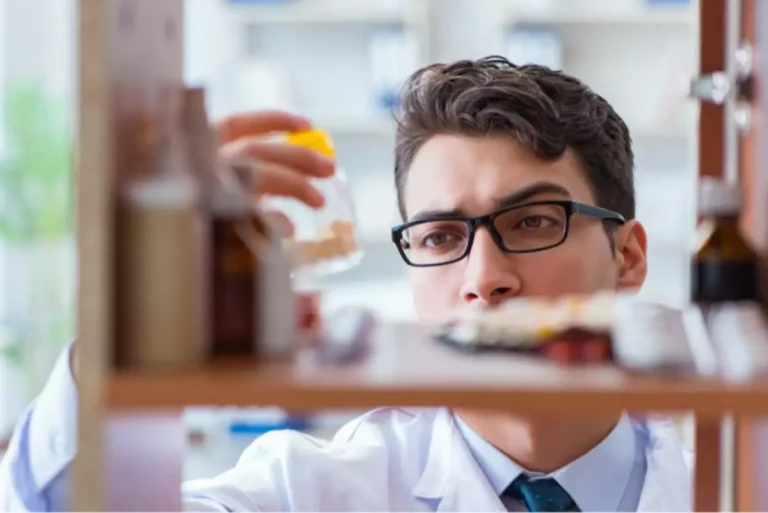
This means those positive alcohol studies could be vastly under-counting alcohol-related deaths since they’re not including enough younger subjects. Globally, the age-standardized death rate has declined from approximately 40 deaths per 100,000 people in the early 1990s to 30 deaths per 100,000 in 2019. The charts show global consumption of spirits, which are distilled alcoholic drinks, including gin, rum, whisky, tequila, and vodka. Beer contains around 5% of pure alcohol per volume1 so that one liter of beer contains 0.05 liters of pure alcohol. With the change country feature, it is possible to view the same data for other countries.
Life Expectancy of an Alcoholic

Find out how many people have alcohol use disorder in the United States across age groups and demographics. The purpose of this study was to evaluate mortality and life expectancy in people who had AUD in Denmark, Finland and Sweden between 1987 and 2006. Withdrawal symptoms could be serious, including tremors and hallucinations. It is critically important how long do alcoholics live to seek out a professional alcohol addiction treatment program to safely detox and withdraw from alcohol use. Even if your loved one seeks help, you may still need help and support to overcome the effects. Many people refer to alcoholism as a “family disease” because it can have a major impact on all members of the family whether they realize it or not.
Effects of Alcohol on Pre-existing Health Conditions
Table 1 shows the distribution of the demographic characteristics of the MJ Health Screening Center (MJ) cohort by drinking status. There were 339,267 (78.8%) participants without drinking, 60,309 (14.0%) modest drinkers, and 30,440 (7.1%) regular drinkers. It should be noted that the regular drinkers in Table 1 includes the ex-drinker group because the portion of ex-drinker was very small (3%) but the hazard ratios were large and were comparable with regular drinkers. In addition, male and female demographics and clinical characteristics by drinking status presented separately in Table S3 and S4 as the difference of health risk in relation to alcohol between male and females does exist. Alcohol use disorder is a progressive disease that includes a beginning, middle, and end stage, which can result in life-threatening health conditions. It’s not often talked about, but left untreated, alcohol use disorder can be a fatal disease.

Health Alerts from Harvard Medical School
Heavy Drinking Damages Health
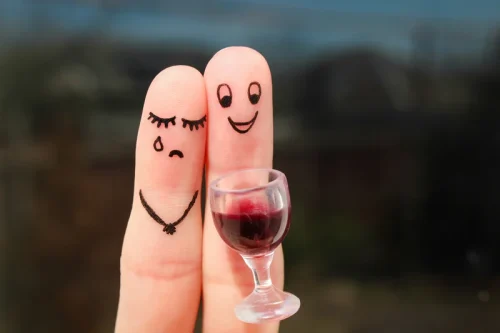
- Published in Sober living
Sober Living Houses Restoration Recovery Center, Inc
Individual therapy leads to greater peace and understanding about your triggers for addiction. The mission of MHSA – New Life House is to help patients achieve and sustain sobriety through supportive services. They do this despite lacking specific licenses or awards mentioned in available data. The tax provisions of the bill ensure that digital assets won’t face discriminatory treatment. While standard taxes will apply to transactions using digital assets just as they do with U.S. dollar transactions, the legislation prohibits any additional taxes, withholdings or charges based solely on the use of digital assets as a payment method.
MHSA moves Soup Kitchen and Food Pantry to new location at 750 Main St.
Calls to our helpline (all non-facility specific 1-8XX numbers) will be answered by Treatment Addiction Solutions, or one of our verified local treatment partners. Boston, a historic coastal city, offers a vibrant arts and culture scene with world-class museums, parks, and restaurants. The city has seen a 36% increase in opioid-related New Life House Review deaths from 2019 to 2022, and between 50 and 81 percent of all seized drugs in Suffolk County tested positive for fentanyl in 2023. Addiction commonly results in varying levels of malnutrition, vitamin and mineral deficiencies. This can be reflected in weight loss, hair loss or hair changes, skin irregularities and damage to multiple internal body functions.
Due to its huge success, the 12-step program is included as a part of other substance abuse treatments. Cognitive Behavioral Therapy (CBT) is a type of psychotherapy that focuses on the underlying thoughts and behaviors that caused the problem of addiction in the first place and may cause a relapse. Negative feelings are common in substance abuse disorders, and if not recognized, they can cause co-occurring disorders. Inpatient rehabilitation aims to treat severe addictions and co-occurring disorders.
New Life House serves as a beacon in the realm of private non-profit organization, delivering an array of residential/24-hour residential, and long-term residential solutions. Their suite of treatment methodologies embraces everything from anger management, brief intervention, cognitive behavioral therapy, motivational interviewing, relapse prevention, substance use disorder counseling, and 12-step facilitation . A drug treatment facility provides an array of crucial services, including inpatient and outpatient treatment, substance use treatment, detoxification, and mental health support.
Ways You Can Support MHSA
With several sites in the Greater Boston area, our highly trained staff provide clinical oversight and specialized services to help our patients achieve and sustain their sobriety. Over the course of up to six months, patients are given the individualized clinical support needed to find employment, reestablish family and community connections, and pursue healthy and life-long recovery goals. Upon the successful completion of the program, patients transition into stable, sober living environments where they can continue to thrive as productive members in our communities. Middlesex Human Service Agency Inc (MHSA) is a registered 501(c)(3) public charity based in Boston, MA, offering recovery programs for adults affected by substance use disorders. Their men’s recovery programs provide intensive services to help patients achieve sobriety and transition into stable living environments.
MHSA Recovery Programs
- It’s important to note that our helpline is completely free of charge, and there is no obligation to enter into treatment.
- When family members are more proactive and involved in the treatment procedure, it encourages the patient to advance his or her progress.
- It begins with the individuals accepting that they are addicts, and they understand its consequences.
- Negative feelings are common in substance abuse disorders, and if not recognized, they can cause co-occurring disorders.
- Residential treatment programs are those that offer housing and meals in addition to substance abuse treatment.
- After participating in a 30-day orientation process, clients are given the resources to work towards a variety of personal and programmatic goals, in accordance with house rules.
In some cases, we charge our verified partner a modest cost per call, which helps us cover the costs of building and maintaining our directory. We do not receive any commission or fee that is dependent upon which treatment provider a visitor ultimately selects. Trauma therapy is a way of addressing trauma while in a safe situation in order to heal. Healing past traumas and introducing coping strategies are strong foundations for sustained recovery from addiction.
Eating correctly to replace lost vitamins and minerals while balancing your diet can build confidence while restoring your health from the inside out. For more information about Find Recovery Center’s commitment to ethical marketing and treatment practices, as well as guidance on selecting a treatment provider, please visit our About page. It’s another moment that signals Biden and his White House are feeling less constrained now that his term is entering its final months. The president had made appealing to moderate Republicans a part of his reelection strategy before he dropped out of the race in July and – while he branded Trump a “threat to democracy” frequently – he had not been quite so blunt. Previously, Biden said more than two years ago that “semi-fascism” underpins MAGA ideology. A highly trained staff of 200+ servicing 13 high-impact programs throughout Greater Boston.
A vital follow-up treatment service is aftercare support provided to individuals at MHSA – New Life House in Massachusetts after they attain initial sobriety. In the midst of an addiction certain healthy habits and behaviors can be forgotten or discarded altogether. While in treatment you will learn life skills that will help you successfully maintain sobriety and rebuild your life in Boston, MA. Some examples of this are time management, social skills, nutrition, hygiene, stress management and taking care of yourself. By leveraging this outside support with the intensive programming offered by New Life House staff, clients are encouraged to maintain meaningful employment while eventually moving into a stable, sober living environment. By successfully completing the program, New Life House clients learn to utilize their sobriety as a tool to effectively navigate and maintain valuable relationships with family, friends, employers and members of their communities.
- Published in Sober living
Alcohol and Depression: The Link Between Alcoholism and Depression
Alcohol intolerance occurs when a person’s body cannot metabolize or break down alcohol effectively. Breathing, somatic, and meditation techniques can help to settle your emotions while your physical body recovers. These fears, feeling physically ill, and the sudden crash of “feel-good” chemicals create the perfect environment for anxiety to take over.
Seeking Help for Alcohol-Related Mental Health Issues
The good news is that there are plenty of expert-backed ways for older adults to cope with depression that don’t involve drinking alcohol. According to Po-Chang Hsu, MD, a physician, clinical researcher, and medical content expert at Alpas Wellness, the study highlights how significant changes like leaving the workforce can influence mental health. It offers a more comprehensive understanding of how older adults cope with these transitions. A new study found a link between retirement and an increase in depressive symptoms. When you address one without the other, then that can lead to relapse or unresolved symptoms.
According to the Diagnostic and Statistical Manual of Mental Disorders, Fifth Edition (DSM-5), if depression symptoms persist after one month without consuming alcohol, then a different depressive disorder diagnosis would apply. If you feel depressed even when you don’t drink, or you drink because you feel depressed, it’s best to reach out to a mental health professional. When other factors beyond alcohol play into your mood, however, feelings of depression might persist even after your hangover improves. When you have healthy habits in place to cope with unwanted feelings, you’ll probably find it easier to use these strategies to push back against distressing emotions you might experience while drinking. It’s more likely to worsen negative mood states, along with physical health. If you already have depression, you might feel even worse, since alcohol can magnify the intensity of your emotions.
What to Do About Depression and Alcohol Misuse
People who experience hangovers may also have fears about what they did, if they embarrassed themselves, or if they encountered any dangerous situations while drinking. The process creates what’s known as oxidative stress, or an imbalance between different types of molecules that results in inflammation. After you drink any kind of booze—vodka, wine, sake, you name it—enzymes in your body get to work metabolizing the alcohol (chemically known as ethanol) in your system. Drinking, at least in moderation, was once seen as a harmless—or even healthy—indulgence that could strengthen your heart and even lengthen your lifespan. But in many scientific circles, consuming virtually any amount of alcohol is now seen as toxic.
Ask a Clinician: Does Alcohol Make Depression Worse?
Using alcohol as a self-medication tool poses several risks to mental and physical health. Alcohol can lead to greater emotional instability and worsen symptoms of depression and anxiety. Those who self-medicate with alcohol may face long-term psychological health issues and an increased risk of developing psychiatric disorders. The temporary relief provided by alcohol is not worth the potential harm it causes. Instead, seeking appropriate mental health support and finding alternative coping methods are crucial steps toward recovery. These side effects highlight the need for comprehensive care to address both the physical and emotional aspects of alcohol use.
Commonly Treated Addictions
- Some people may experience a temporary uplift in mood or sense of happiness when drinking alcohol.
- It’s worth noting that current guidelines advise against drinking alcohol as a way to improve health.
- Alcohol might make them feel better for a short amount of time, but once the brain chemicals rebalance and the effects of alcohol wear off, the symptoms of anxiety can come back even worse.
- By increasing recovery capital through social support, HIV-HCV patients might reduce their drinking.
- The mental health symptoms of withdrawal can be intense and need careful management.
She recommends hobbies that help relieve stress, things you may have enjoyed doing before retiring but didn’t have time for, or trying something new. Painting, exercising, traveling, taking care of grandchildren, volunteering, working part-time, and spending time with friends are all excellent options, she said. On the other hand, excessive consumption can trigger or worsen these episodes. That creates a cycle that is difficult to break without professional help.
Coping Strategies for Older Adults
Troubled sleep can relate to the actual changes in an individual’s brain chemistry that is related to alcohol use. Alcohol acts as a depressant through its interaction with the brain’s neurotransmitters, which are chemicals that transmit signals in the brain and nervous system. It enhances the effects of GABA (gamma-aminobutyric acid), a neurotransmitter that has inhibitory effects sober house on brain activity. By increasing GABA’s effectiveness, alcohol promotes relaxation, reduces stress, and lowers inhibitions, leading to the depressant effects on the CNS.
They struggle to cope with depression while failing in the battle with alcohol use disorder. In turn, that creates a vicious cycle that may seem impossible to break free. One of the most common dual diagnoses in rehab centers is depression paired with an alcohol use disorder https://yourhealthmagazine.net/article/addiction/sober-houses-rules-that-you-should-follow/ (AUD). But, there’s no doubt that alcohol has a considerably negative impact on our mental health. There are many reasons why people might experience depression after drinking.
What we don’t know: The significant limitations of alcohol-related health research
Drinking too much alcohol can bring on depressive symptoms, and people with depression often turn to alcohol to find relief. While drinking alcohol can initially lift your mood and make you feel relaxed, it has a tendency to worsen depression symptoms over time. Depression is the most prevalent co-occuring mental health condition with 63% of people with AUD experiencing major depressive disorder. A study from the National Institute on Alcohol Abuse and Alcoholism also found that people with an AUD were 2.3 times more likely to have experienced symptoms of depression over the previous year.
- Published in Sober living
The 4 Stages of Alcohol and Drug Rehab Recovery
Alcohol withdrawal can be exceedingly unsettling and scary if the process is done alone. The overall process of detoxification is the body’s natural approach to removing toxins from the body. In a medical setting, however, trained professionals can monitor an individual’s symptoms and be prepared to administer medications if needed in a comfortable and safe detox experience.
Moreover, support groups like Alcoholics Anonymous (AA) provide a sense of community and shared commitment to sobriety. During this recovery phase, various mental health aspects include emotional stability, cognitive function, and psychological well-being. At the preparation stage, alcoholics have decided to make a change, and they are planning to take meaningful steps toward recovery in the near future. During this stage, people Alcoholic ketoacidosis Wikipedia are experiencing the negative impacts of their alcohol addiction, but they have no intention of changing their behavior. Whether you seek help voluntarily or are forced by circumstances to enter rehab, your recovery process will begin with a professional treatment program. When that person cuts out alcohol, there is a period when their brain hasn’t yet received the message and still overproduces the stimulating chemicals.
Starting Your Alcoholism Recovery Journey
At this stage, the focus will shift from alcoholism to other, more important underlying issues, such as low self-esteem, trauma, feelings of guilt or shame, and relationship problems. A very high rate of alcohol abuse occurs among people who have survived sexual or physical abuse. As a trained professional helps one work to resolve the internalized pain of the past, they will become able to start handling conflict without the destructive effect of alcohol. It is recommended that alcohol abuse recovery take place at an inpatient facility in more serious cases. Whatever the choice of treatment, some patients will embrace their new lives after being done with drinking. They’ll rediscover past hobbies and pleasant pastime or pick up new ones.
Difficulty getting long, restful sleep is also common in the early days of the alcohol recovery timeline. We also suggest developing new nighttime https://g-markets.net/sober-living/the-best-gifts-for-celebrating-1-year-sobriety/ rituals that calm your mind and body before bed. Journaling to release stressors or trying guided meditation are great places to start.
Learn More About Alcoholism Treatment
However, medical complications can occur during the acute phase of withdrawal. Alcohol withdrawal symptoms range from mild but annoying to severe and life-threatening. This concept of tolerance—generally thought of as how much alcohol a specific person can use before feeling the effects or before becoming highly intoxicated—really refers the differences in how bodies process alcohol. Always seek the advice of a physician or other qualified health provider with any questions you may have regarding a medical condition.
- Chronic alcohol use can alter brain chemistry, leading to an imbalance in neurotransmitters and affecting mood regulation.
- With the right treatment – typically a combination of MAT (medication-assisted treatment), counseling, and psychotherapy – it is perfectly possible to stop drinking alcohol.
- In the event of a medical emergency, call a doctor or 911 immediately.
- Addiction develops over time, in response to repeated substance use, as the action of drugs changes the way the brain responds to rewards and disables the ability to control desire for the drug.
- Published in Sober living
Alcohol Poisoning: Symptoms, Causes, Complications, and Treatment
If you experience an https://ecosoberhouse.com/, your outlook will depend on how severe your overdose is and how quickly you seek treatment. If you have other health conditions, such as diabetes, you may be at greater risk for having an alcohol overdose. Men are more likely than women to drink heavily, resulting in a greater risk for an alcohol overdose.

Along with obvious signs, drugs can cause obvious changes in behavior. While teenage years bring about personality shifts, if you notice any combination of symptoms and suspect drug abuse might be a problem, make sure to address the problem. Know the danger signals, and if you suspect that someone has an alcohol overdose, call 911 for help immediately.
What to Do If You Think Someone Has Alcohol Poisoning
This often delays the diagnosis of alcohol poisoning, worsening the outcome. Alcohol poisoning can appear similar to many life-threatening conditions. For example, hypoglycemia (low blood sugar), a stroke, or a seizure can cause problems with speech and level of consciousness that may be confused with alcohol consumption. The liver, which normally metabolizes and detoxifies alcohol, is damaged by chronic alcohol use.
- One of the biggest dangers is the belief that you can tolerate a large amount of alcohol just because you have consumed that amount in the past.
- This effect decreases the gag reflex, which can make you choke on your own vomit while passed out or sleeping, causing potentially fatal consequences.
- Alcohol intoxication can vary by tolerance (meaning whether your body is accustomed to the presence of alcohol through repeated use), your gender, body weight, body fat percentage, and other factors.
Teenagers and young adults who drink may be at particular risk for alcohol overdose. Research shows that teens and college-age young adults often engage in binge drinking and high-intensity drinking. Drinking such large quantities of alcohol can overwhelm the body’s ability to break down and clear alcohol from the bloodstream. This leads to rapid increases in BAC and significantly impairs brain and other bodily functions. This article looks at fatal blood alcohol levels, signs and treatment of alcohol overdose, what BAC is and signs of different BAC levels, and support with managing or quitting drinking. Alcohol poisoning happens when there’s too much alcohol in your blood, and parts of your brain shut down.
Effects of Teen Drug Use
Ruminant farm animals have natural fermentation occurring in their stomach, and adding alcoholic beverages in small amounts to their drink will generally do them no harm, and will not cause them to become drunk. Someone who is “just drunk” will be slurring their words, stumbling around, and acting drowsy. Someone with alcohol poisoning will be breathing slowly or irregularly, have cold skin, be vomiting a lot, and perhaps have a seizure or lose consciousness. A drunk person can recover with rest, fluids, and eating a balanced meal, while a person with alcohol poisoning needs to go to the hospital and get an IV or maybe their stomach pumped.
If you are concerned that they could hurt you, maintain a safe distance while waiting for professional help. Alcoholic drinks contain a form of alcohol known as ethyl alcohol or ethanol. This is also found in mouthwashes, some medicines, and household products.
How to Help Someone That Has Overdosed
You may also be given help with your breathing until the effects of the alcohol wear off. For more information about alcohol’s effects on the body, please visit the Interactive Body feature on NIAAA’s College Drinking Prevention website. If a person does not want to stop drinking or is alcohol overdose not yet ready to quit, there are still ways they can stay safe while drinking. You may want to take a family member or friend along, if possible. Explore Mayo Clinic studies testing new treatments, interventions and tests as a means to prevent, detect, treat or manage this condition.
Certain substances cause the brain to produce more dopamine, a chemical signal that reinforces reward. Over time, the effects of drugs on the brain can permanently alter the way your teen’s brain functions. The effects of drug abuse on teens can be permanent and damaging to themselves, friends and family. Risks can increase based on the drug of abuse, if other drugs are involved, and how long the abuse has been taking place. Teen drinking and underage drinking remain a common problem in our society. Alcohol may be difficult to shelter your child from, so make sure they know the health risks of alcohol like impaired judgment and alcohol poisoning.
Who May Be at Risk?
Signs of withdrawal start within hours to days after they last used the drug. Withdrawal symptoms will depend on which type of drug your teen is using. Days later, Dana said Dex died of an accidental drug overdose … Penning an emotional tribute to his son, praising his musical talents and calling him a “beautiful person.” County Medical Examiner’s Office — the comedian’s adult son’s official cause of death was toxicity from fentanyl, ketamine and cocaine.
- Because an alcohol overdose can suppress a person’s gag reflex, they could choke and possibly die if they vomit while unconscious and lying on their back.
- Take our free, 5-minute alcohol use self-assessment below if you think you or someone you love might be struggling with alcohol misuse.
- Vasodilation also causes blood to rush to the skin, potentially leading to hypothermia.
- Many people consume alcohol because it has a relaxing effect, and drinking can be a healthy social experience.
- However, there are steps you can take to help, and possibly save the person’s life.
- Published in Sober living
Stages of Alcoholism: Symptoms of Early, Chronic & End Stages
Alcohol abuse can progress to What is the Difference Between Alcohol Abuse and Alcoholism or addiction, but this is not always true. A review of the 11 factors set forth in the DSM-5 regarding severe alcohol use disorder (i.e., the presence of six or more factors) provides additional insight into this condition. Having six or more of the alcohol use disorder symptoms would indicate the need for a treatment intervention to address the addiction. Chronic, heavy alcohol use also wreaks havoc on the brain’s reward system, which can alter the way the brain perceives pleasure and limit a person’s ability to control his or her behavior.
Individuals with an alcohol use disorder (alcoholism) will likely experience the symptoms of physical dependence as well as psychological effects. No one sets out to become an alcoholic, but regular, heavy drinking can result in alcohol dependence and alcoholism. The primary role of specialist treatment is to assist the individual to reduce or stop drinking alcohol in a safe manner (National Treatment Agency for Substance Misuse, 2006). At the initial stages of engagement with specialist services, service users may be ambivalent about changing their drinking behaviour or dealing with their problems. At this stage, work on enhancing the service user’s motivation towards making changes and engagement with treatment will be particularly important.
Who Experiences Alcohol Withdrawal Symptoms?
Alcoholics Anonymous is available almost everywhere and provides a place to openly and non-judgmentally discuss alcohol problems with others who have alcohol use disorder. It’s a disease of brain function and requires medical and psychological treatments to control it. Alcohol misuse and the related problems present a considerable cost to society.
Only 30% provide some form of assisted alcohol-withdrawal programme, and less than 20% provide medications for relapse prevention. Of the residential programmes, 45% provide inpatient medically-assisted alcohol withdrawal and 60% provide residential rehabilitation with some overlap between the two treatment modalities. The alcohol withdrawal programmes are typically of 2 to 3 weeks duration and the rehabilitation programmes are typically of 3 to 6 months duration. Around one third of people presenting to specialist alcohol services in England are self-referred and approximately one third are referred by non-specialist health or social care professionals (Drummond et al., 2005).
Learn more about Alcohol Dependence
Therefore, it is helpful from a clinical perspective to subdivide dependence into categories of mild, moderate and severe. People with mild dependence (those scoring 15 or less on the Severity of Alcohol Dependence Questionnaire [SADQ]) usually do not need assisted alcohol withdrawal. People with moderate dependence (with an SADQ score of between 15 and 30) usually need assisted alcohol withdrawal, which can typically be managed in a community setting unless there are other risks. People who are severely alcohol dependent (with an SADQ score of 31 or more) will need assisted alcohol withdrawal, typically in an inpatient or residential setting. In this guideline these definitions of severity are used to guide the selection of appropriate interventions.

In the United States, most states have low-cost or free rehabilitation programs for those who are uninsured. However, try not to have too many firm expectations, as symptoms can continue for multiple weeks in some people. During the 12- to 24-hour time frame after the last drink, most people will begin to have noticeable symptoms. These may still be mild, or the existing symptoms might increase in severity. Research has shown that the terminology used does, in fact, influence how people with a substance use disorder view themselves as well as how others view them. Research shows that most people who have alcohol problems are able to reduce their drinking or quit entirely.
End-Stage Alcohol Abuse
Knowing the difference between the disorders can help you take stock of your situation and decide what you must do next. Essentially, these are the questions you should be asking if you want to want to tell the difference between alcohol abuse and alcohol dependence. Still not sure about the difference between alcohol abuse and alcohol dependence? Alcohol dependent individuals will often make several unsuccessful attempts to cut down on their intake or quit drinking altogether.
- The language used in the past often served to stigmatize people who are affected by alcohol use disorder.
- Nevertheless it continues to be used by WHO in its public health programme (WHO, 2010a and 2010b).
- What often starts as social drinking can quickly progress to problem drinking and this is more common than you think.
- Those with mild to moderate symptoms may receive treatment in an outpatient setting.
The good news is that no matter how severe the problem may seem, most people with AUD can benefit from some form of treatment. Many people addicted to alcohol also turn to 12-step programs like Alcoholics Anonymous (AA). There are also other support groups that don’t follow the 12-step model, such as SMART Recovery and Sober Recovery. Unlike cocaine or heroin, alcohol is widely available and accepted in many cultures.
In the same study examining patients attending specialist alcohol treatment services, overall 85% had a psychiatric disorder in addition to alcohol dependence. Eighty-one per cent had an affective and/or anxiety disorder (severe depression, 34%; mild depression, 47%; anxiety, 32%), 53% had a personality disorder and 19% had a psychotic disorder. The term “alcoholism” is commonly used in American society, but it is a nonclinical descriptor.
Thereafter, the prevalence of alcohol-use disorders declines steadily with age. The same US study found the prevalence of dependence was 4% in 30- to 34-year-olds and 1.5% in 50- to 54-year-olds. A similar UK study found the prevalence of alcohol dependence to be 6% in 16- to 19-year-olds, 8.2% in 20- to 24–year-olds, 3.6% in 30- to 34-year-olds and 2.3% in 50- to 54–year-olds (Drummond et al., 2005). Therefore, it is clear that there is substantial remission from alcohol-use disorders over time. Much of this remission takes place without contact with alcohol treatment services (Dawson et al., 2005a). Data on alcohol-related attendances at accident and emergency departments are not routinely collected nationally in England.
For others, their alcohol problems are overcome with the help of a mutual aid organisation, such as Alcoholics Anonymous (AA; see Section 2.10). Nevertheless, many will require access to specialist treatment by virtue of having more severe or chronic alcohol problems, or a higher level of complications of their drinking (for example, social isolation, psychiatric comorbidity and severe alcohol withdrawal). Alcohol is rapidly absorbed in the gut and reaches the brain soon after drinking. This quickly leads to changes in coordination that increase the risk of accidents and injuries, particularly when driving a vehicle or operating machinery, and when combined with other sedative drugs (for example, benzodiazepines).
- If you think you might have an alcohol problem, discuss it with a healthcare provider.
- Adverse health impacts and social harm from a given level and pattern of drinking are greater for poorer societies.
- According to the National Institute on Alcohol Abuse and Alcoholism, women shouldn’t drink more than one drink per day, and men shouldn’t drink more than two drinks per day.
If you drink more alcohol than that, consider cutting back or quitting. Allied to AA are Al-anon and Alateen, jointly known as Al-anon Family Groups. Al-anon uses the same 12 steps as AA with some modifications and is focused on meeting the needs of friends and family members of alcoholics. Again, meetings are widely available and provide helpful support beyond what can be provided by specialist treatment services. All of these factors are important in promoting longer term stable recovery. Alcohol dependence is also a category of mental disorder in DSM–IV (APA, 1994), although the criteria are slightly different from those used by ICD–10.
- Published in Sober living
